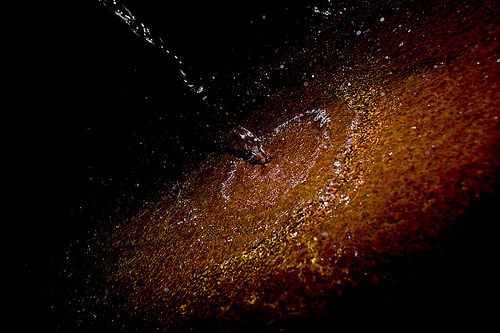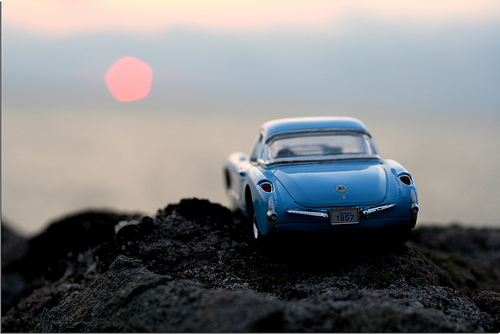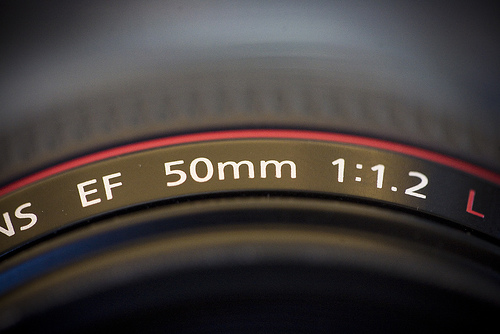
A photograph is the photographer’s creation. It is a perfect blend of the photographer’s vision, art and creativity. It is the photographer, his technique and his knowledge which makes all the difference. Just picking up an expensive camera in hand and shooting left, right and centre does no good in getting great images. In fact, a good photograph is the marriage of timing and creativity. Along with a little bit of planning, interpretation of light and compositional rules, some crucial photography decisions help you in getting the photographs you want. Here are ten such photographer’s decisions which will help you take better photographs.
-
What Should I Prefer — Auto Modes Or Semi-Auto Modes
As a beginner, shooting in the auto mode almost always assures that you get what you want. But as you advance, you can choose to use the specific scene modes, Portrait mode for portrait photography and Night mode for shooting in low-light conditions for instance. And then you can always play around with semi-auto modes like shutter priority and aperture priority modes to get creative with your camera. So if you’re looking for photographing the portrait in context of the environment, turn on the aperture priority mode and choose a higher f-number or turn on the sports mode if you are planning to take dynamic motion shots.

-
When Should I Opt In For Manual Mode
Switch on the manual mode only when you know what you are doing. The manual mode allows you full control over the exposure. The camera in the manual mode thus allows you to set shutter speed and aperture independently, giving you the ease of taking good shots even in tricky lighting conditions.
-
Trigger Flash Or Turn It Off
The on-camera flash is a compact and critical source of light a photographer has. But relying on the intelligent machine for firing the flash at the right time is stupid. Owing to the fact that the flash light has it’s own quirks and at times can completely ruin your photographs, it is better to understand when to use flash and when to completely avoid it. Bouncing the flash light off the walls and ceiling in low-light ambience or using it as fill flash when shooting in direct sun makes sense for capturing good shots. Refer to this practical guide on using flash for getting better results with flash photography.

-
Burst Mode Or One Single Shot
If you are all set to capture the liveliness of wildlife, playfulness of your kids and pets or some candid portrait shots, turning on the continuous shooting mode is worth it. And if you’re out there to shoot the still life, pay attention to light, think about the composition and release the shutter for single exposure. So the next time you are planning to shoot a splash scene or freezing the fast action, you know where to bang on! Yes, turn on the burst mode and take instant shots of the subject in action.
-
Which format to shoot in — RAW Or JPEG
The pros advice you to shoot in RAW. The RAW format is analogous to the film negative. The choice to shoot in RAW gives the digital photographers the freedom to focus on photographing the scene creatively than to worry about white-balance, sharpness, colors, saturation in-camera and the likes. JPEGs or the processed images on the other hand call for making precise settings in-camera, deviating you from the basic element of photography — the visualization. It’s your take; if you shoot in RAW, all you need to take care of is to get the light right but shooting in JPEG engages you in taking care of multiple camera-settings. Better solution is to choose RAW+JPEG.

-
Which Focus Mode Should I Choose
Sometimes you cannot simply rely on the camera’s auto-focus. It plays tricks and focuses on the wrong subject. While using one of the auto-focus modes [Continuous (AF-C) , Single (AF-S), Automatic (AF-A) – Nikon’s auto-focus modes] helps you get the accurate results, still there are some situations where manual focus gives better results. Check out the manual focus mini series on DIY Photography to get an idea when and why manual focus is better than the auto-focus.
-
Hand-held Shots Or A Sturdy Tripod
With in-built image stabilization feature in most of the cameras and lenses, you can rest assured of decent results if you know how to hold your camera like a pro! But if you are planning to slow down the shutter speed or making long exposures, it is always better to rest your camera on a sturdy surface or pick one of the tripods from this list of unique camera tripods to take your camera to places it simply couldn’t have gone before.
-
Which Lens Should I Use
Have you ever wondered what do professional photographers carry in their arsenal. Along with the secondary camera, they generally carry a number of lenses for specific scenes and subjects. Knowing which lens is best suited for specific application, for instance using 50 mm prime lens for portrait photography and putting on telephoto lens for shooting the wildlife and birds, helps you in getting the desired effect in the final result. Check out the various types of lenses and their specific application here.

-
How To Get Great Colors: In-camera Or Off-camera
Getting great yet accurate colors is one thing which goes a long way in making your photographs impressive. While you have the choice of fine-tuning the colors in Photoshop by applying various filters or white-balance presets, adjusting the levels and curves (for correcting the brightness and contrast of the scene) or by playing around with hue, saturation and RGB channels, you can easily get great, real and accurate colors in-camera as well. All it takes to get great colors in-camera is the right time and the right technique. Check out the article titled How To Get Great Colors In-Camera for some handy tips for going the purist’s way of getting unmatched colors in-camera.
-
Photoshopping Or The Purists Approach
Some photographers get great photographs direct from the camera while other make it “happen” in Photoshop. While the purists love to tune the camera settings, pros generally shoot in RAW and make crucial adjustments like correcting the color cast and fine-tuning the sharpness in post-processing phase. Post-processing gives you a creative edge. In words of Neil Creek, “It’s an extra opportunity to learn more, make better photos and become a better photographer. And to be quite honest, post-processing can be fun! Import your photo, sprinkle a bit of magic ‘post’ dust on a photo, and export something with much more life and impact.”
What decisions help you in taking better photographs?


Excellent article. I wish you can tell me the type of photoshop sofware you prefer.
Thanks a lot
Roberto lino